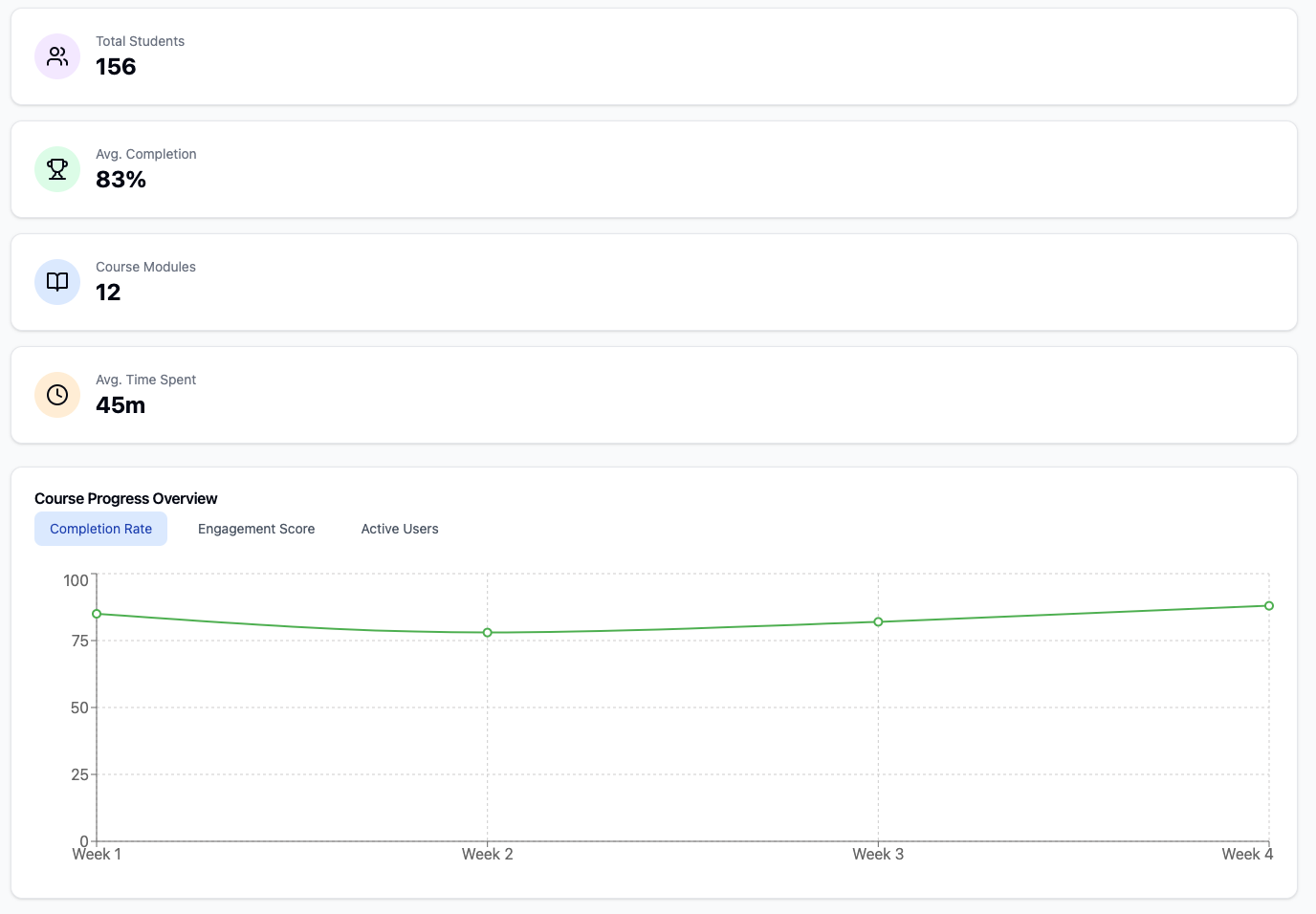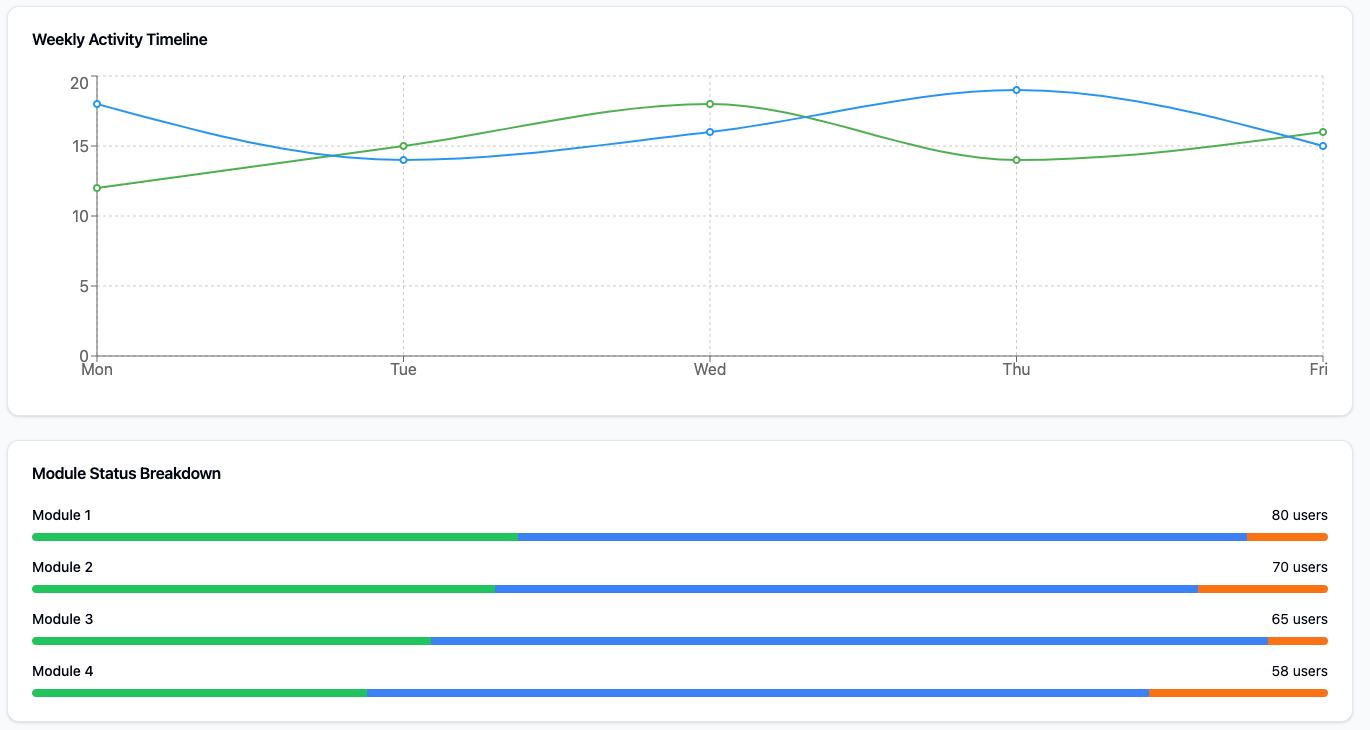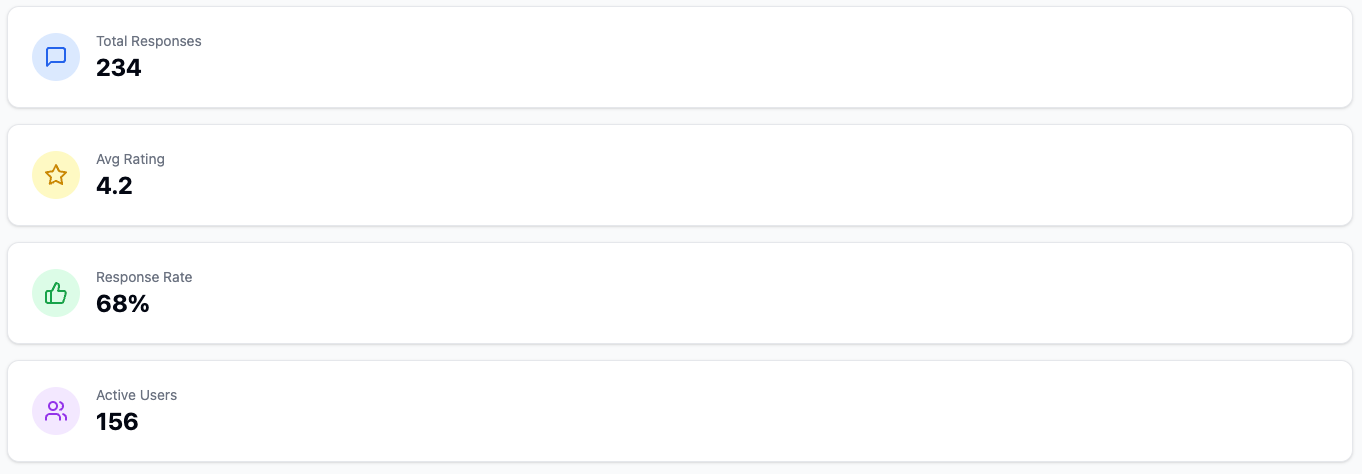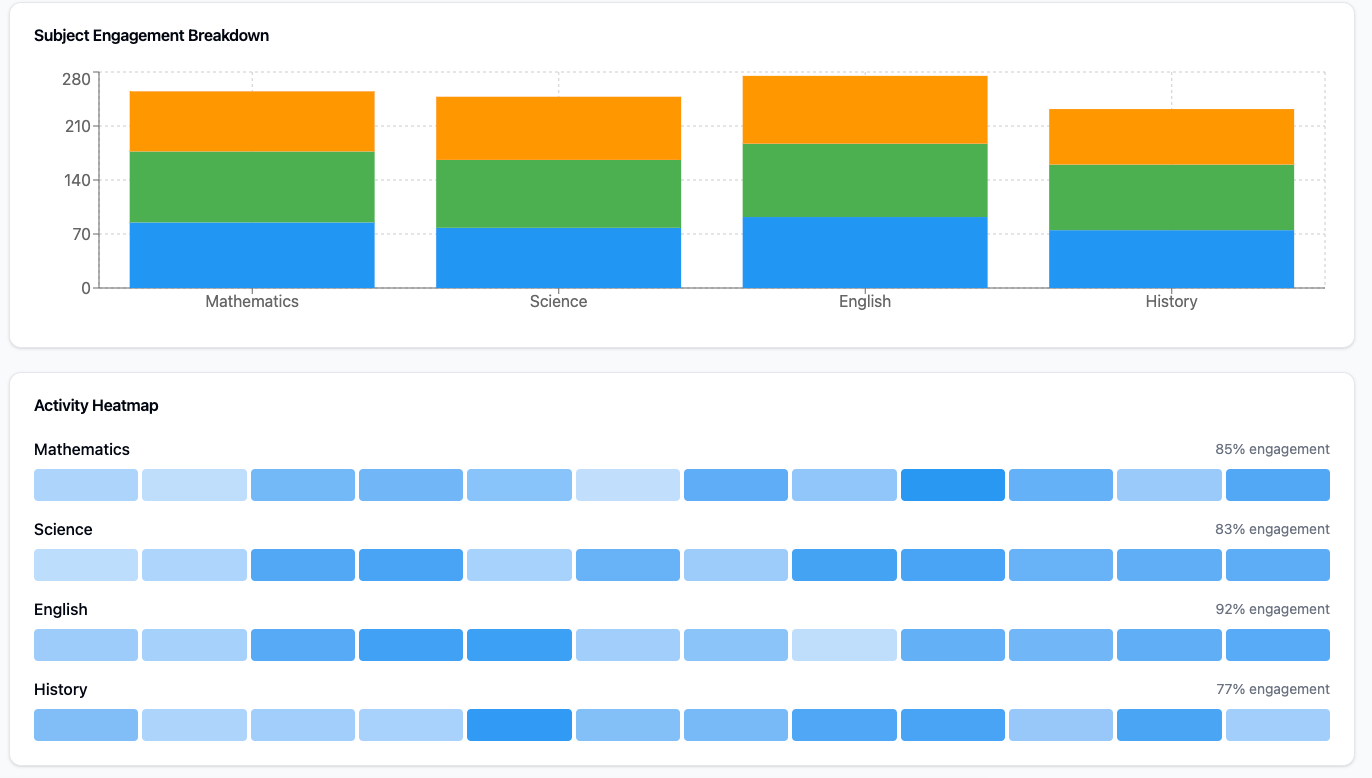How to Create an Online Course Analytics Tool Using Bubble Effectively
How to Create an Online Course Analytics Tool Using Bubble: Data-Driven Education
In a data-driven world, educational institutions and course creators are looking for powerful analytics tools to understand and improve student learning. Building a course analytics platform with Bubble is an innovative solution that combines powerful functionality with no code. This guide will show you how and why.
The education sector has been waiting for a technology revolution, and Bubble’s platform is that paradigm shift. Removing the coding barriers it allows educators and institutions to build advanced analytics tools without needing technical expertise. This democratization of development has changed how institutions approach their analytics needs, giving unprecedented access while maintaining professional-grade capabilities.
The Bubble API enables users to connect their applications with external services and enhance functionality. It allows for the creation of custom integrations and functionalities, making practical implementation best understood through hands-on experience.
The platform’s combination of simplicity and power makes it perfect for educational use. The visual development environment has a drag-and-drop interface, real-time preview, and a visual workflow builder to make complex data relationships manageable. Behind this user-friendly face is a robust data management system that can handle the most demanding educational analytics.
Introduction to Course Analytics
Course analytics is a crucial aspect of understanding user behavior and improving application performance. By leveraging course analytics, educators can gain valuable insights into how users interact with their courses, identify areas for improvement, and make data-driven decisions to enhance the learning experience. In this section, we will explore the importance of course analytics and how it can be used to optimize course creation and delivery.
In the realm of education, understanding how students engage with course material is paramount. Course analytics provides a window into user behavior, revealing patterns and trends that can inform instructional strategies. By analyzing data points such as time spent on modules, completion rates, and engagement levels, educators can pinpoint which areas of their courses are most effective and which need refinement. This data-driven approach not only helps in creating more engaging and effective courses but also supports personalized learning experiences that cater to individual student needs.
Understanding Bubble and its Capabilities
Bubble is a powerful no-code platform that enables users to create web applications without writing code. With its drag-and-drop interface, users can design and build complex features, including progress tracking, user feedback collection, and data synchronization. Bubble’s capabilities make it an ideal platform for creating interactive and dynamic web apps that cater to various user needs. In this section, we will delve into the features and functionalities of Bubble and how it can be used to create robust web applications.
Bubble stands out in the no-code landscape due to its versatility and ease of use. The platform’s drag-and-drop interface allows users to visually design their applications, making it accessible even to those without technical expertise. This interface is complemented by a powerful workflow engine that enables users to create complex tasks and automate processes. Whether it’s setting up progress tracking to monitor student achievements or collecting user feedback to refine course content, Bubble provides the tools needed to build sophisticated educational applications. Additionally, Bubble supports data synchronization with external services, ensuring that your application can integrate seamlessly with other tools and platforms.
Setting Up a Bubble Account and Database
To get started with Bubble, users need to set up an account and create a database to store and manage information. In this section, we will guide users through the process of setting up a Bubble account, creating a database, and configuring data types and fields. We will also cover how to connect external services and APIs to Bubble to enhance its functionality.
Creating a Bubble account is the first step towards building your educational analytics platform. Once registered, you can start by setting up a database to store all relevant data, such as student profiles, course content, and progress metrics. Bubble’s intuitive interface makes it easy to define data types and fields, ensuring that your database is structured to meet your specific needs. Furthermore, Bubble’s flexibility allows you to connect with external services and APIs, enabling data synchronization and extending the functionality of your application. This integration capability ensures that your analytics platform can grow and adapt to incorporate new data sources and tools as needed.
Modern Learning Analytics Features and Progress Tracking
Student progress is the foundation of any analytics platform, and Bubble allows you to build advanced tracking systems that go beyond basic metrics. Modern education requires tracking mechanisms that can adapt to different learning environments and teaching approaches. A well-designed analytics platform built on Bubble can combine course completion metrics, time-based engagement analysis, and performance over time. Additionally, it enables educators to track progress, helping monitor student achievements and engagement effectively.

Key tracking features:
-
Digital badge integration for achievements
-
Milestone tracking across learning objectives
-
Competency-based assessment tracking
-
Progress certification automation
Data visualization turns raw educational data into decisions. With Bubble’s visualization capabilities, educators can build interactive dashboards that present complex data in a simple way. These visualizations allow real-time monitoring of student performance and engagement so you can intervene and adjust the course.
Building a Progress Tracking Feature in Bubble
Progress tracking is a critical feature in any learning application, as it enables users to track their progress and stay motivated. In this section, we will provide a step-by-step guide on how to build a progress tracking feature in Bubble. We will cover how to create a database to store progress data, design a user interface to display progress, and set up workflows to update progress in real-time.
To build a progress tracking feature in Bubble, start by creating a database to store progress data. Define the necessary data types and fields, such as course modules, completion status, and timestamps. Next, design a user-friendly interface that visually represents progress, using elements like progress bars, checklists, or badges. Bubble’s drag-and-drop interface makes it easy to create an engaging and intuitive design. Finally, set up workflows to update progress in real-time. These workflows can trigger updates based on user actions, such as completing a module or passing an assessment, ensuring that progress data is always current and accurate. This real-time tracking not only keeps users motivated but also provides educators with valuable insights into student performance.

Collecting User Feedback in Bubble
Collecting user feedback is essential to understanding user behavior and improving application performance. In this section, we will explore how to collect user feedback in Bubble using various methods, including forms, surveys, and ratings. We will also cover how to analyze and visualize user feedback data to gain valuable insights into user behavior and preferences.
User feedback is a goldmine of information that can drive continuous improvement in educational applications. Bubble offers several methods to collect this feedback, from simple forms and surveys to more interactive rating systems. By embedding these elements into your application, you can gather direct input from users about their experiences and preferences. Once collected, this feedback data can be analyzed and visualized using Bubble’s data visualization tools. Creating dashboards and reports that highlight key trends and insights allows educators to make informed decisions about course content and delivery. This iterative process of collecting and analyzing feedback ensures that your educational platform remains responsive to user needs and continuously evolves to provide a better learning experience.

Implementation, User Feedback, and Technical Considerations
Building an analytics platform requires planning and a structured approach. It starts with a well-designed database structure that can hold student profiles, course content mapping, and assessment frameworks. To effectively gather data, it is crucial to use tools that allow for flexible and comprehensive data collection, which forms the basis for a structured approach in analytics generation. This foundation must be flexible enough to evolve with changing educational needs while maintaining performance.
Technical requirements:
-
Event tracking for detailed interaction monitoring
-
Data processing workflows for analytics generation
-
Custom calculation engines for advanced metrics
-
Performance optimization
Real-time monitoring is another key aspect of modern educational analytics. With Bubble, institutions can build advanced tracking systems that give immediate insights into student engagement and performance. This real-time visibility allows educators to support and intervene proactively to identify and address learning challenges before they become big problems.

Examples in Education
Universities and colleges have unique challenges in managing and analyzing student performance across multiple courses and departments. A Bubble analytics platform can give insights at an individual and institutional levels so data-driven decisions can be made across the organization. From faculty dashboards to administrative tools, the platform can be configured to serve different stakeholder needs.
Individual course creators have the same capabilities, but their focus is on content optimization and business intelligence. By analyzing module effectiveness and engagement patterns, they can refine their content to better serve their students. Incorporating other data points is crucial for tracking multiple relevant metrics for effective management. The platform can track:
-
Content engagement by learning style
-
Student retention and intervention points
-
Revenue and growth trending
-
Marketing campaign and ROI
Integration, Scalability, and External Services
As institutions grow, their analytics needs change and expand. Bubble’s architecture is designed to support this growth with scalable capabilities and many integration options. The platform can connect to other educational tools and business systems to create a holistic ecosystem that supports both educational and operational goals. A Bubble app offers versatility and functionality, seamlessly integrating with external platforms like Thinkific and utilizing tools such as analytics and user testing to enhance user experience and streamline app management.
Integration with:
-
Learning Management Systems (LMS)
-
Student Information Systems (SIS)
-
Payment gateways
-
Communication and marketing tools
Scaling requires considering both technical infrastructure and business growth. Bubble’s platform handles this with load balancing, database optimization, and cache management. This technical foundation can support large user bases and fast performance and data access.
The Future of Educational Analytics and User Engagement
Artificial intelligence and machine learning are the next big thing in educational analytics. Bubble’s platform is designed to be flexible to incorporate these advanced capabilities to do predictive analytics and automated insights that can change educational outcomes. From student success prediction to personalized learning path generation, these are exciting times for education. Additionally, the integration of virtual reality can create immersive environments that make learning more engaging and interactive, allowing course creators to utilize tools and APIs to implement VR features effectively.
Customization options allow institutions to keep their brand while using analytics tools. White-label solutions support custom branding and theming and personalized dashboards and report templates for different user groups.
Summary
Building course analytics with Bubble is a great opportunity to turn data into insights. With no code and lots of functionality, it’s perfect for institutions and course creators. Follow a considered approach and use the features to build advanced analytics tools that drive better learning outcomes and institutional success.
Building course analytics is an ongoing journey, refinements will be needed based on user feedback and changing educational requirements. With Bubble’s scalable infrastructure and customization options, institutions and course creators have the tools to build analytics solutions that grow and adapt to their goals to support educational excellence through data.
